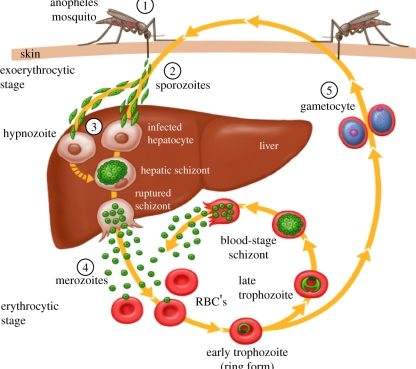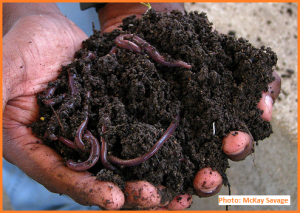Pig is associated with human civilization since long back as Barah Avatar mentioned in holy book “Vishnu Puran”.Even today in some part of the country, especially tribal dominated state/region, it is known as festive food. Pig farming is very lucrative and easy source of regular income as fast growing, important source of animal protein, short generation interval and better feed conversion efficiency with higher dressing percentage. Piglets are traditionally weaned at about 56 days of age, when they can utilize as feed themselves of both animal and plant origin and have developed immunity to resist infection. In commercial production systems newly weaned pigs do not have access to soil, a natural source of iron, and therefore it is common practice to use an iron injection in the first few days post-farrowing to avoid iron deficiency. However, earlier production systems that reared pigs outdoors could meet the iron requirement from the pigs rooting the ground. The soil is a substantial source of iron because of the interactions of crystalline iron interacting with plants, microbes, and organic substances making it soluble (Colombo et al., 2014).
Nursing pigs require 7 to 16 mg of iron per day to support erythropoiesis and other metabolic activities associated with iron (NRC, 1998).The young pig uses the 40-50mg of its body stores that is transferred during gestation plus iron supplied from sow milk to meet its iron need but this supplies become inadequate within 7 to 10 day of age, and pig becomes anemic. Larger and faster growing growing pig will exhibit signs of anemia sooner because of their increasing tissue growth and corresponding need for a greater blood volume.
Iron deficiency is a serious problem in swine production. It is a microelement of great importance, an essential mineral and is a component of hemoglobin for all kinds of animals. Iron is also involved in electron transport, oxidative phosphorylation and is a component of ribonucleotide reductase, which is involved in DNA synthesis in the cell (Linder, 1991). Compared to other microminerals that are regulated through excretion, the maintenance of whole-body Fe homeostasis is through regulation of Fe absorption (Hallberg and Hulthén, 2000). In young swine, inefficient absorption of Fe reduces the number of circulating red blood cells resulting in anemia and poor growth performance (Kim et al., 2017). More than 60% of the body’s iron is a component of hemoglobin in circulating red blood cells and insufficient supplementation or absorption of iron causes iron-deficiency anemia.
The oral administration of iron has two advantages: cost and the fact that absorption is regulated by the intestinal mucosa. However, oral administration requires multiple doses. This is because a single dose may not be sufficient to protect the piglets from iron deficiency anemia for the first 4 weeks post-partum. The iron bioavailability in oral iron depends greatly on iron status of animals (Amine et al., 1972; Susan and Wright, 1985). In addition, dietary factors such as amino acids and protein sources (Martinez et al., 1981), pectin content, phytate (Morris & Ellis, 1982) and the other minerals (Elvehjem and Hart, 1932; Hedges and Kornegay, 1973; Suttle and Mills, 1966) may also influence the bioavailability of iron.
The absorption of iron is mainly regulated by the intestinal mucosa. Iron absorption occurs predominantly in the proximal small intestine (Miller and Ullrey, 1997; O’Dell, 1989; Wood and Han, 1998). The absorption of iron depends not only on body stores of iron but also on the molar ratio of iron with respect to the other essential trace elements such as copper and zinc. An adequate amount of copper is required for utilization of iron (Elvehjem and Hart, 1932). Iron is commonly absorbed in the protonated (Fe3+) state. In the pig, absorption takes place in the small intestine and mainly in the duodenum and jejunum through ferrous iron receptors. Iron is transported across mucosal cells by diffusion or by the use of amino acids, such as cysteine, ornithine, lysine, or histidine (Hill and Spears, 2001). The high growth rate in modern swine farm increases the susceptibility of heavy pigs to iron deficiency than small and medium-sized pigs due to the higher blood volume and hemoglobin utilization capacity. It also has been found that the heavier or faster-growing pigs had lower hemoglobin and hematocrit than smaller sized pigs by 17 days of life (Jolliff and Mahan, 2011). The rapid growth rate of young pigs puts a great demand on the erythropoietic system to maintain proper function (Holter et al., 1991). Minerals that can reduce iron bioavailability are divalent minerals, such as Ca, P, Zn, Cu and Mn, which share the small intestinal divalent metal transporter. In pig diets, other minerals are used sparingly due to toxicity or environmental legislation issues, so may have limited impact.
REFFERENCES
- Amine, E. K.; Raymond, N. and Hegsted, M. (1972). Biological estimation of available iron using chicks or rats. J .Agri. Food Chem. 20(2):246 – 251.
- Martinez-Torres, C.; Romano, E. and Layrisse, M. (1981). Effect of cysteine on iron absorption in man. Am J Clin Nutr. 34: 322 -327.
- Morris, E.R.; Ellis, R. (1982). Phytate wheat bran and bioavailability of dietary iron: In: Nutritional Bioavailability of Iron. Kles, C (ed), pp. 121.American Chemical Society Wahsington DC.
- Miller, E.R. and Ullrey, D.E. (1997). Baby pig anemia. In: Pork Industry Handbook, pp. 1 – 4. Cooperative Extension Service Purdue University West Lafayette Indiana.
Authors Information:
- Dr. Mamata Joysowal, Assistant Professor, mamtajaiswal525@gmail.com, CVSc, AAU, Khanapara
- Dr. B. N. Saikia, Professor, bibeka.saikia5@gmail.com, CVSc, AAU, Khanapara
- Dr. Reema Shrestha, JRF, reemashrestha74@ gmail.com, CVSc, AAU, Khanapara
- Dr. Dangshawa Morung, MVSc scholar, dangshawamorung5@gmail.com CVSc, AAU, Khanapara




